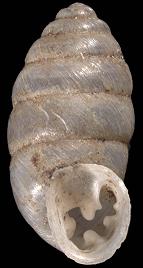Interactions
G. armifera can be found in numerous locations across America, and therefore the number of organisms that share a habitat with G. armifera is enormous. Typically, the presence of G. armifera is an indicator of other more inconspicuous species in the Class Gastrocopta being present. Because the range of G. armifera inhabitance is so widespread, there are countless interactions both positive and negative to the species.
Commensalism
A commensalstic relationship between G. armifera
and smaller species of snails occurs often in nature. Because
the shell of the Armed Snaggletooth is so large, it provides a
rich source of Calcium for smaller species looking to glean off
of it(Discover, 2011). This can
explain why smaller species of
Gastrocopta can be found in close proximity to G.
armifera populations. Although this may seem like a
predatory relationship, it is not because the smaller snails are only able to glean the shells after the Armed Snaggletooth has
already died.
Predatory
Again, because the ecological niche that G.
armifera is so large, it is exposed to countless species.
However, the Armed Snaggletooth regularly falls prey to
salamanders and small mammals such as shrews and mice
(Discover, 2011).
Parasitic
The Class Trematoda, or the endoparasitic flukes
almost exclusively parasitize mollusks as a means of sexual
reproduction. The flukes use the snail body as an intermediate
host with the final or definitive host being a vertebrate. The
flukes specialize on one species of snails to parasitize, with
virtually all species of Gastropods being infected by at least
one type of fluke(Hickman et al, 2007).
G. armifera is no exception to this.


